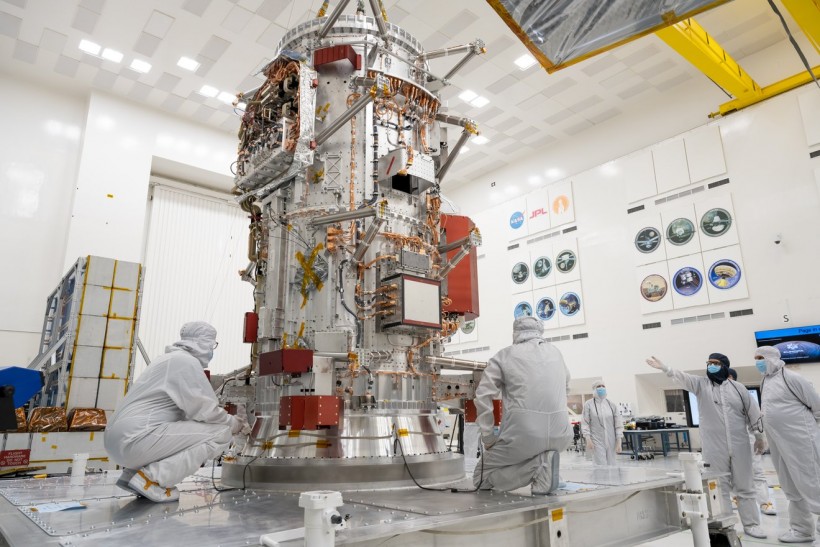According to NASA, Jupiter has 53 named moons and 26 others waiting to be officially listed as its moon. If combined, Jupiter has 79 moons. But the most interesting of them are the four moons that orbit the giant planet that scientists call the Galilean satellites: Io, Callisto, Ganymede, and Europa.
In a new video released by the American space agency, they showed the birth of the Europa Clipper probe that will look for traces of life on the icy moon of Jupiter. Other iconic missions of NASA, including the Saturn explorer Cassini and the Martian rovers, are coming together as well in the assembly lab.

Standing 10 feet (3 meters) high, the core of NASA's Europa Clipper will be the focus of attention in High Bay 1 of JPL's storied Spacecraft Assembly Facility as engineers and technicians assemble the spacecraft for a 2024 launch.
NASA Engineers Start to Build the Europa Clipper
NASA engineers can be seen moving the 10-foot-tall (3 meters) and 5-foot-wide (1.5 meters) Europa Clipper in Jet Propulsion Laboratory's High Bay 1 clean room in Southern California. Space.com reported that the probe will stay in the assembly lab for the remainder of its construction until its launch in October 2024
Transporting the spacecraft from a smaller clean room to High Bay 1 took several days and needed a whole technical team to assist with the unwrapping and positioning of the probe.
Engineers will continue to attach electronics compartments to the spacecraft's body in the upcoming months to shield the sensitive instruments from the intense cosmic radiation around Jupiter. Europa Clipper probe contains 2,100 feet (640 m) of cables and some instruments yet to be built.
NASA estimates that the Europa Clipper probe will arrive at the ice-covered Europa moon in 2030, where it will perform at least 50 flybys and gather data on the atmosphere of the smallest of Jupiter's four main moons. One of its missions is to measure the salinity of Europa's ice-covered ocean and the moon's crust's thickness and look for potential vapor vents.
Some of the instruments the probe will be carrying include the Plasma Instrument for Magnetic Sounding that will enable scientists to assess the conditions of life on Europa and the Europa Imaging System wide-range camera. Both instruments have already been delivered to NASA JPL.
Meanwhile, the thermal-emission imaging instrument (E-THEMIS), the ultraviolet spectrograph, and Europa UVS are already mounted on the spacecraft's body. NASA said that most flight hardware will be ready at the end of this year, while 2023 and half of 2024 will be spent on testing.
ALSO READ: NASA's $4.25B Europa Clipper Spacecraft is Going to Jupiter's Icy Moon Aboard Falcon Heavy
Europa: Jupiter's Icy Moon
Jupiter's moon Europa is the sixth largest moon in the Solar System and has caught the interest of scientists. Planetary reported that it is the smoothest solid object in the Solar System despite its cracked and discolored appearance.
The smoothness of Europa means that it is probably just a few tens of millions of years old rather than billions, which is relatively young. Its icy surface is also smoothed out faster than other worlds, although scientists still do not know why this happens. They think it has something to do with what is below the moon's surface.
They think it contains a sea that has twice as much water as all of Earth's oceans combined, making it a great subject for exploring signs of life. The evidence of water beneath Europa's surface is strong based on models of how the ocean below affects the icy surface.
If there is indeed a liquid ocean on Europa, it can be a place to look for life because water is an essential factor to support life as we know it. Watch the video below, showing NASA engineers working on Europa Clipper:
RELATED ARTICLE: NASA Begins Construction of Europa Clipper, Launch in 2024 by SpaceX
Check out more news and information on Space in Science Times.














